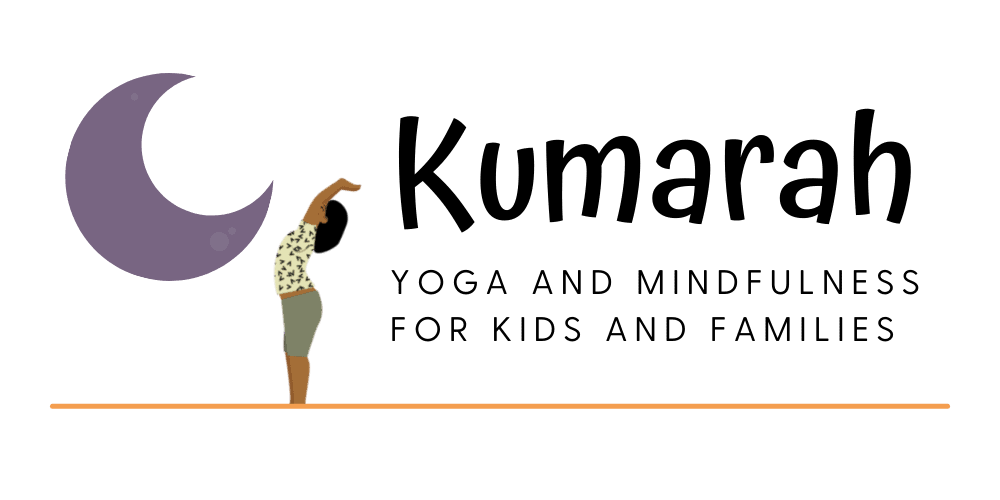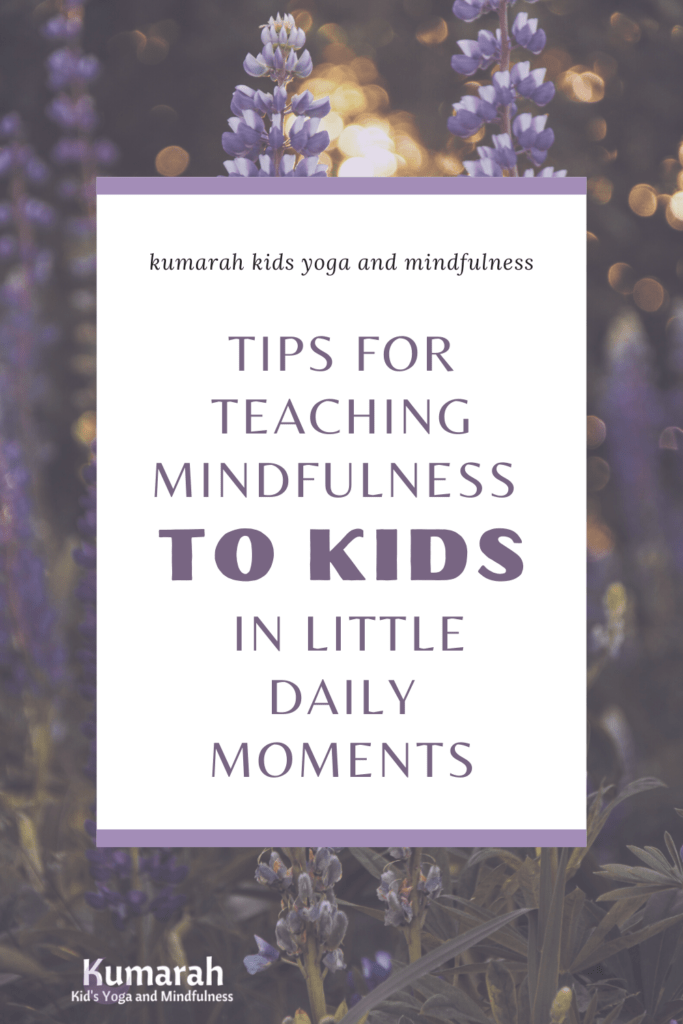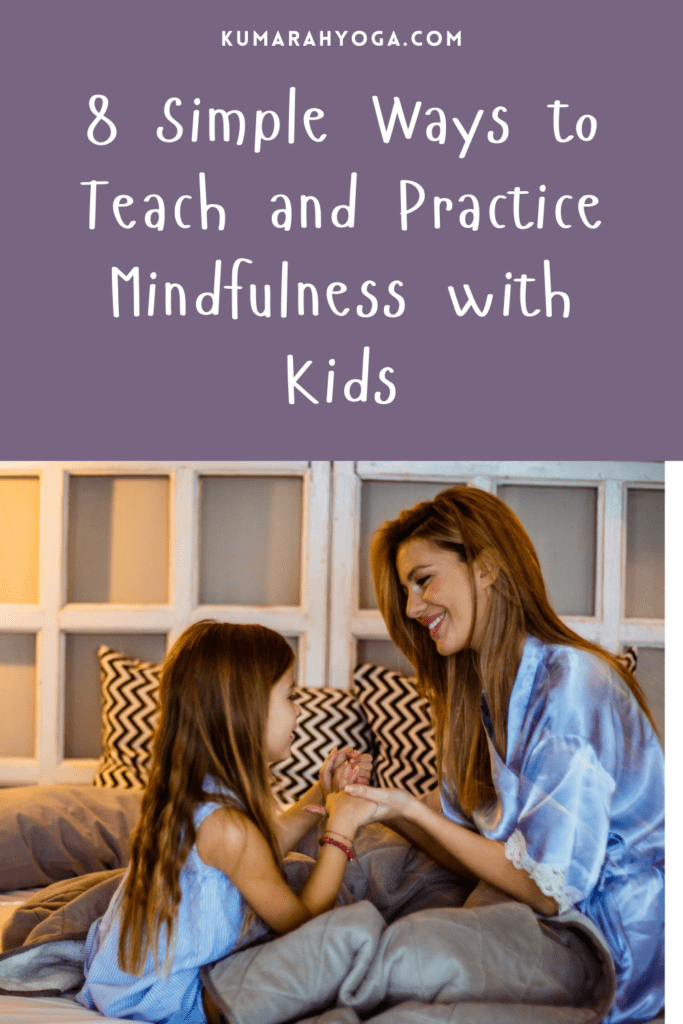Scroll down to get your Free Mindfulness Workbook below! ⤵️⤵️⤵️
If you are aiming to raise happy, healthy kids, you might want to start to teach mindfulness to them every day.
Why?
It has been proven to help kids learn to focus, regulate their emotions, and help them appreciate the small things-leading to greater happiness and less stress.
What is Mindfulness?
Mindfulness, simply put, is the practice of focusing on just one thing at a time. It is a bit different from sitting in silence and trying not to move, which is what many folks think of.
In some religions and spiritual practices, meditation is used to clear the mind and achieve enlightenment. It is also used in a non-religious way to help the mind learn to focus and be less busy with worry.
Many people still use meditation as a way to practice mindfulness, but the art of mindfulness is a much bigger umbrella.
Left Brain Buddha has a good quote explaining how mindfulness is different from meditation:
“Mindfulness is the practice of paying attention — to thoughts, physical sensations, and the environment — without constantly feeling the need to judge what’s happening or to make it other than it is. To cultivate this present moment awareness, we pay attention on purpose, with an attitude of kindness to ourselves and others.”
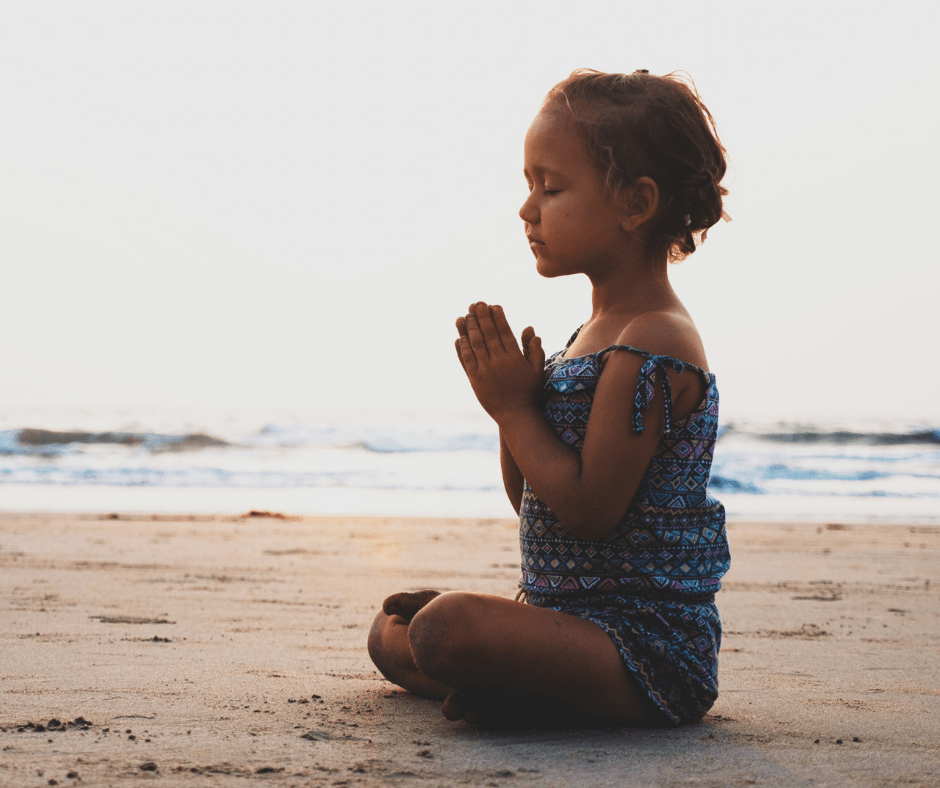
Mindfulness is paying attention to something and not judging your reaction to it. To recognize a thought, a breath, a feeling, and to know that it is temporary. To let it be what it is and not try to change it.
Mindfulness is a way of living and being that can help us feel connected to ourselves and our surroundings while fostering a natural gratitude and sense of contentment.
How is Mindfulness for Kids Different?
When you teach mindfulness to kids, there are different ways you can talk about it and explain it to them. It doesn’t help kids to hear the words, “calm down”, “be mindful”, or “pay attention” unless they know HOW to do those things. It takes practice to be able to understand what that feels like or looks like in their bodies.
Kids are often already VERY present in their lives. When they get hurt, they really feel it! Like times a thousand!
Telling them to calm down in the moment isn’t a good way to help them practice mindfulness. The best way to help them learn mindfulness is before they have a temper tantrum, not during.
Some techniques we can use are to help them notice their breath instead or to pay attention to the way their body is reacting to the hurt. To slow down, pause, and take a breath. Teach them how to find their breath by placing their hand under their nose to feel the air, or resting their hand on their belly or low ribs to feel the expansion.
Check out some more fun breathing examples and breathing printables for kids here.
And when they are distracted or frazzled, instead of saying “pay attention,” we can call them to the specifics of what we’d like them to pay attention to.
- Notice your fingers–what are they doing?
- Take a slow breath in and notice your body relax as you breathe out.
- Do a full-body shake, then a full-body relax by naming each body part as you shake it off, then relax again.
- Press each fingertip gently to your thumb, one at time. Notice the pressure between each finger.
Join my online course to learn the best tips for teaching mindfulness to kids and teens in any setting!
Click here to see the course and what it has to offer.
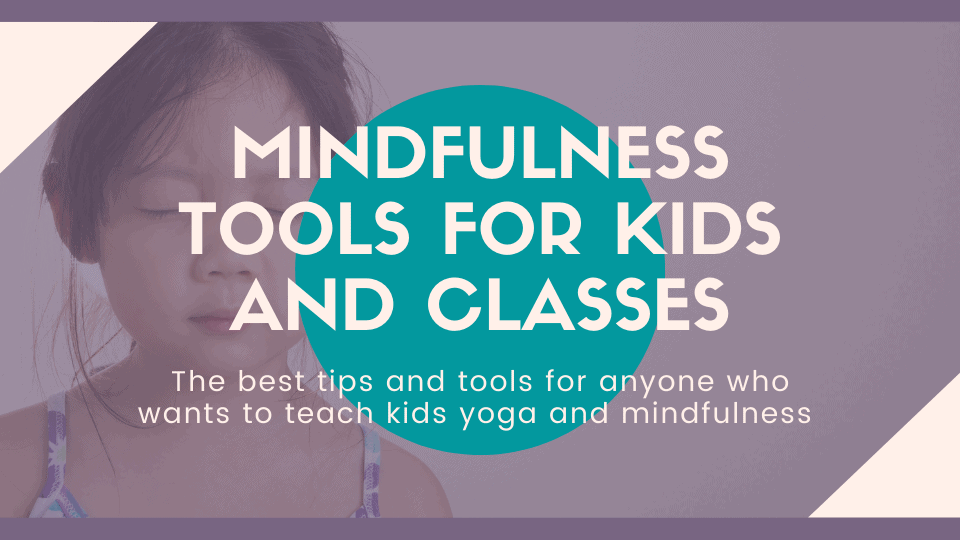
What are the Benefits of Mindfulness for Kids?
There are many benefits of mindfulness for kids, especially if it is a practice that you can continue with every day.
Focused awareness can help kids with schoolwork, test-taking, and following directions.
Emotional awareness is good for helping kids learn to calm down more quickly when they are upset. It can also help prevent them from overreacting or lashing out physically.
Mindfulness with gratitude can help kids feel more thankful for what they have, reduce whining, and increase their compassion for others.
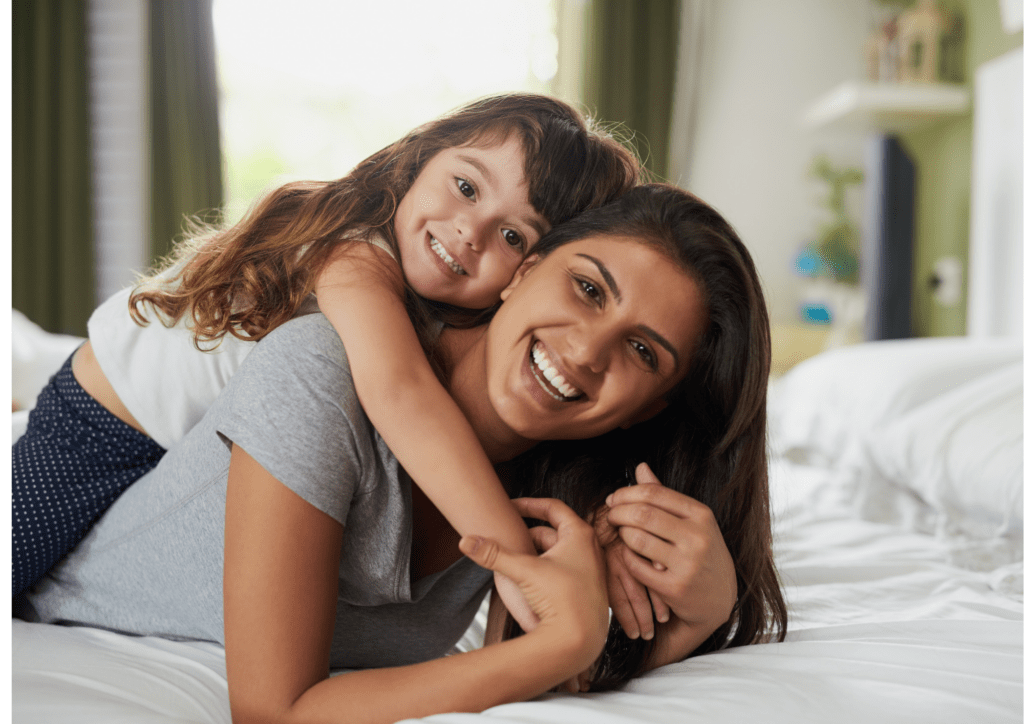
Incorporate mindfulness to help kids with:
- Concentration
- Stress reduction
- Increased empathy
- Better mood
- Happier life
- Improved sleep
- More compassion
- Better self-awareness
- Decreased depression and anxiety
- An overall sense of well-being
- A deeper connection to nature
- A better understanding of energy
- Clearer thinking
- Loving-kindness
- Seeing beauty in others
How do you Start to Teach Mindfulness to Kids?
Teaching mindfulness to kids can feel like a big task. But it doesn’t have to be hard. There are plenty of games, breathing activities, and other resources for helping kids practice this essential skill.
Start by modeling mindfulness yourself.
Sit and meditate in the mornings, or after doing some yoga poses.
If your child is curious, invite them to join in, bring along a stuffed animal, like this adorable yoga bear, Meddy Teddy and start explaining what you are doing and why.
Have them mirror your body and practice a few moments of stillness.
Make sure to practice mindfulness while they are already calm and happy.
Notice their mood and invite them to play a game or do some breathing exercises or yoga poses with you to practice.
You can even tell them that it’s to help prepare for a time when we don’t feel focused or happy. (Like why we practice a fire drill at school when there isn’t actually a fire).
Try some breathing activities, using just their hands, or a small toy or stuffed animal.
Have your child lay on their back and place the animal on their tummy. Let them breathe in and out slowly through their nose all the way down to their tummy to lift and lower the animal with the rhythm.
Find a ton of other fun breathing techniques here.
Lion’s breath, Bunny breaths, Volcano breaths, Heartfulness breath, and more!
Stop and take a moment to pay attention to your senses.
Name and notice 5 things you can see. 4 things you can touch. 3 things you can hear. 2 things you can smell. And 1 thing you can taste. Grab a copy of the mindfulness workbook for free below to get access to this printable!
Play some mindfulness-based games!
Some easy ones are I Spy, Mindfulness Scavenger Hunt, Back-to-Back Breathing, and Keep the Balloon Up. Making mindfulness into a game or activity can be especially good for toddlers and preschool-aged kids to keep them interested longer.
Praise their attention and focus when you notice it, and name it in a positive way.
“You are really focused on your drawing, and I can see that it is helping you get better at copying,” or “Wow you really paid attention to those song lyrics, now you have them memorized!”
Learn more about positive and mindful praise for kids here.
Make a Mindfulness Calm Down Jar.

This gorgeous tool is fun to make, very simple, and can be used by kids and adults alike. When you shake the jar, it’s a metaphor for how your mind might look or feel when filled with thoughts and worries.
As you breathe and are still, like the jar, the glitter starts to slowly settle back down to the bottom and the water is clear again. Just like your mind clears when you let your body be still and take slower deeper breaths.
Find moments of “wonder” or “awe” in your day, and share those with your child.
Getting outside, or being near animals or other people can help us find moments where we feel wonder or amazement in the presence of something special, bigger than us, or simply beautiful.
This can increase our awareness and our happiness.
Take a walk and look for flowers, bees, or listen to the sound of the wind. Notice a baby laughing in a stroller or a smile between an elderly couple. Share what you see and how it makes you feel.
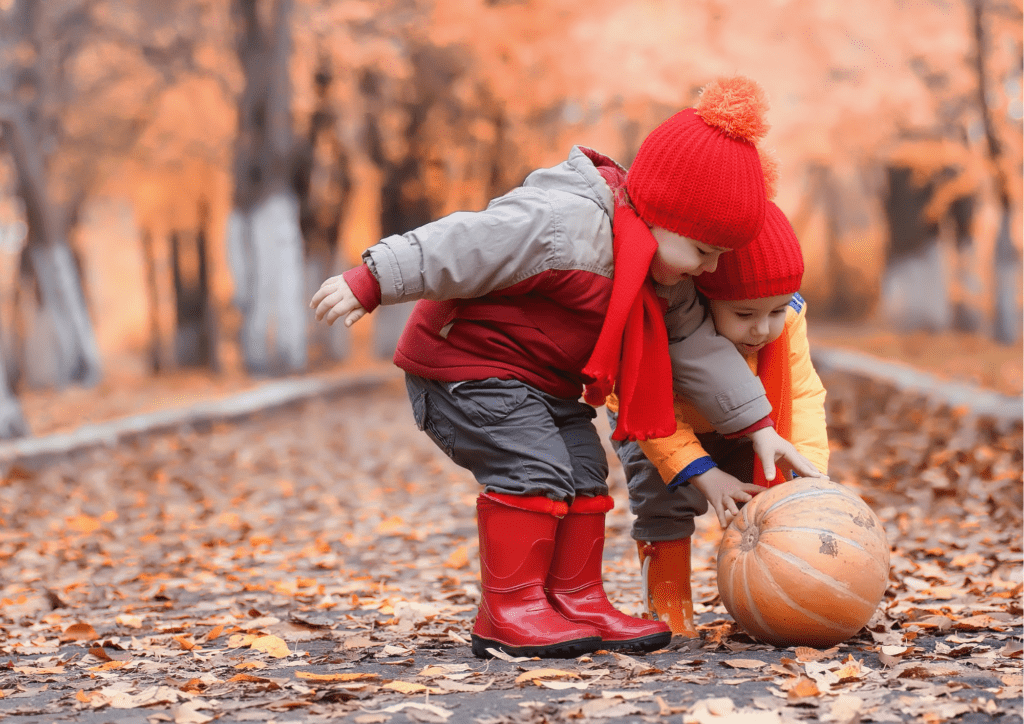
In all of these activities and games, make sure to remind yourself and your child that mindfulness takes practice. Some days it is easy, and some days it is much harder.
But the more you practice, the better at it you will become. And the easier it will feel.
For access to more tips on teaching mindfulness to kids and teens, plus handy ready-to-use tools, check out the course Mindful Tools for Kids and Classes – a self-paced course available all online with tons of tips and resources. Start today!
